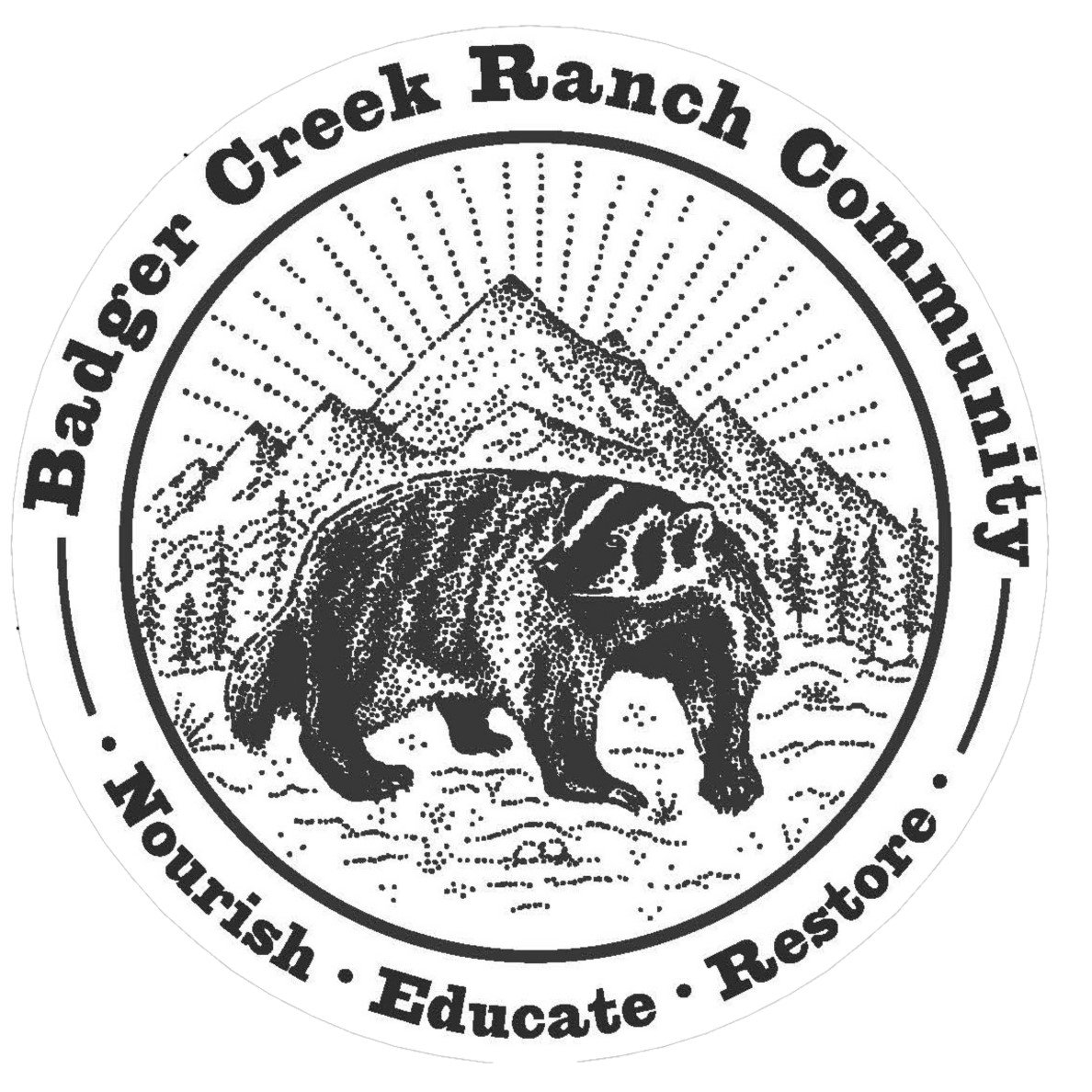Salida Newspaper Feature: Cattle and Birds at Badger Creek Ranch
Badger Creek Ranch receives Audubon certification
Sierra Ross Richer, Special to The Mountain Mail
Salida, Colorado - Dec. 23, 2022
A green sticker featuring a cow, prairie flowers and a songbird now adorns beef products sold by Badger Creek Ranch, 5795 Fremont County Road 2, about 20 miles northeast of Salida.
The label certifies that the ranch’s animals are “raised on Audubon-certified bird-friendly land” – in other words, in an environment where livestock, native vegetation and wildlife thrive together.
Badger Creek Ranch received the Audubon certification in July, after enrolling in the Conservation Ranching Initiative. It was the 100th ranch in the nation to be given the label.
“For us it felt like a really good fit,” said Chrissy McFarren, director and co-owner of the enterprise. Given that restoring and conserving the land are at the heart of the ranch’s mission, she said, “We don’t really have a lot of changes to make.”
Chrissy McFarren, director and co-owner of Badger Creek Ranch, rides her horse, Sugar. Before buying the ranch in 2015, McFarren lived in the Shenandoah Valley of Virginia, where she farmed and ran a nonprofit organization that did equine-assisted healing work.
Like much of the ranchland in the area, Badger Creek Ranch was a short-grass prairie before Europeans arrived in the area, the ranch’s website states. Pronghorns, elk, bison and sheep grazed on the grasses and flowers and attracted Ute and later Comanche and Apache groups who hunted the wild game. But, beginning in the 1800s, ranching by European settlers led to overgrazing and degradation of the ecosystem.
"I have an old photo from the ranch,” McFarren said. “They have 5,000 head of cattle when really there should have been one to 200.”
Early ranchers used practices adopted from the East Coast where there is much more rainfall and an abundance of lush vegetation for cattle to graze on. “We have a lot of repair work to do,” McFarren said.
McFarren and her husband bought Badger Creek Ranch in 2015 together with McFarren’s sister and her husband. Since then, they have committed to restoring the health of the almost 7,000 acres of pasture land they steward by grazing their livestock in a way that enhances ecosystem health instead of harming it.
This means looking out for the wellbeing of other species, including birds.
To ensure that pasture lands provide habitat for native birds like horned larks and vesper sparrows, the Audubon Conservation Ranching Initiative requires that cattle be managed in a way that mimics the habits of native grazers, like bison.
The approximately 100 head of cattle that were grazed on Badger Creek Ranch last summer followed a rotational grazing plan in which they were moved to new grazing spots regularly. This allowed the cows to feed on the high-protein summer grasses without wiping out the natural vegetation that is home to birds and other animals.
Cattle drink from a spring-fed tank at Badger Creek Ranch. These tanks, located around the property, keep the cattle away from the creek, reducing erosion and pollution and allowing wetland plants in the creek bed to regrow.
The Audubon certificate also requires that ranchers routinely monitor the land for soil, plant and wildlife health and that they keep the livestock chemical-free.
Luckily, McFarren said, what’s good for the cattle is also good for the land. “Done properly (cows are) needed on the land to help bring it back to health.”
Cows fertilize the soil, aerate the land with their hooves and mow back vegetation. Scientific research, including a 20-year study at the Tallgrass Prairie National Preserve in Kansas, shows that grazing animals play a key role in maintaining grassland ecosystems, which without the disturbance of fire or grazing become less biodiverse and are eventually overtaken by woody species.
In the last half-century, widespread development of grasslands in North America has led to the decline of many bird species, according to Audubon. As McFarren looks to the future, she worries about the threat of development facing her ranch.
The work of restoration is slow, McFarren said, and it won’t be finished in her lifetime. “If we lose these ranches to subdivisions,” she said, “there’s no getting them back.”
If the children of ranchers don’t want to carry on the work of their parents, and prospective farmers can’t afford the initial investment of buying land, retiring ranchers can be left with no choice but to sell out to developers.
“This is a community question,” McFarren said. “How can we protect and preserve open lands which are ranch lands?”
Ultimately, McFarren hopes to put Badger Creek Ranch into conservation through a land easement so it can be protected for future generations. Opening the land up for the public starts now.
“We’re creating a space for the public to come and learn and get to know the land,” McFarren said.
Through the nonprofit Full Circle Alliance, the ranch offers many opportunities for people to visit and get involved. This includes land health workshops, retreats, open-gate days, volunteer opportunities, overnight stays, membership options, sponsored apprenticeships and internships of various lengths.
The ranch is currently closed for the winter but will open again in April. Those wanting to purchase meat products can do so at the Salida Farmers Market or from the online store.
As McFarren prepares for her ninth season on the ranch, she looks forward to a new initiative in the making.
A pilot program will invite youth from the Ute Mountain Reservation to visit the ranch next summer. Participants in the week-long experience will explore Ute heritage sites on the property, including a buffalo jump and teepee rings, as well as engage in other ranch activities.
“This land belongs to their ancestors,” McFarren said. “We’re stewarding land that is their homeland.”


